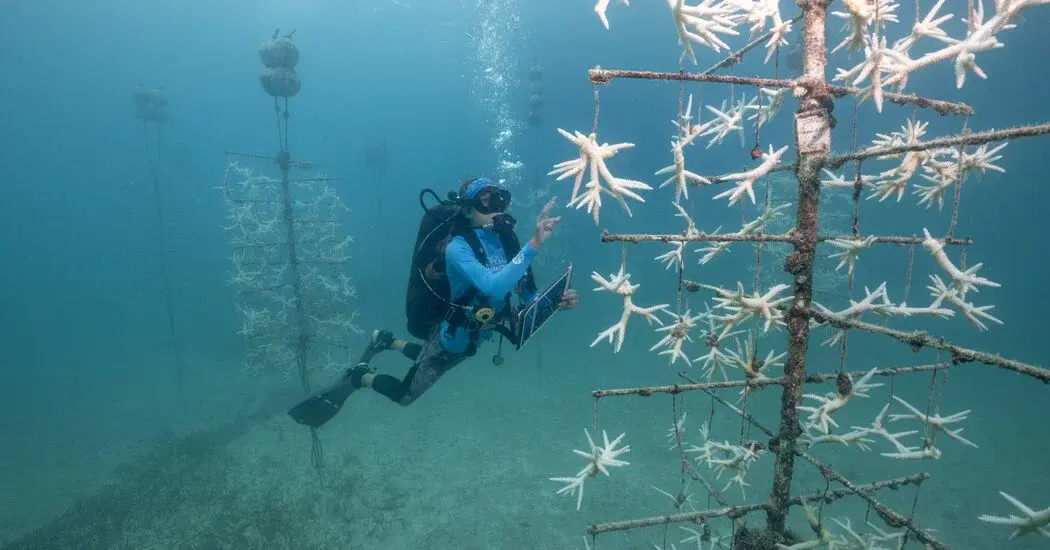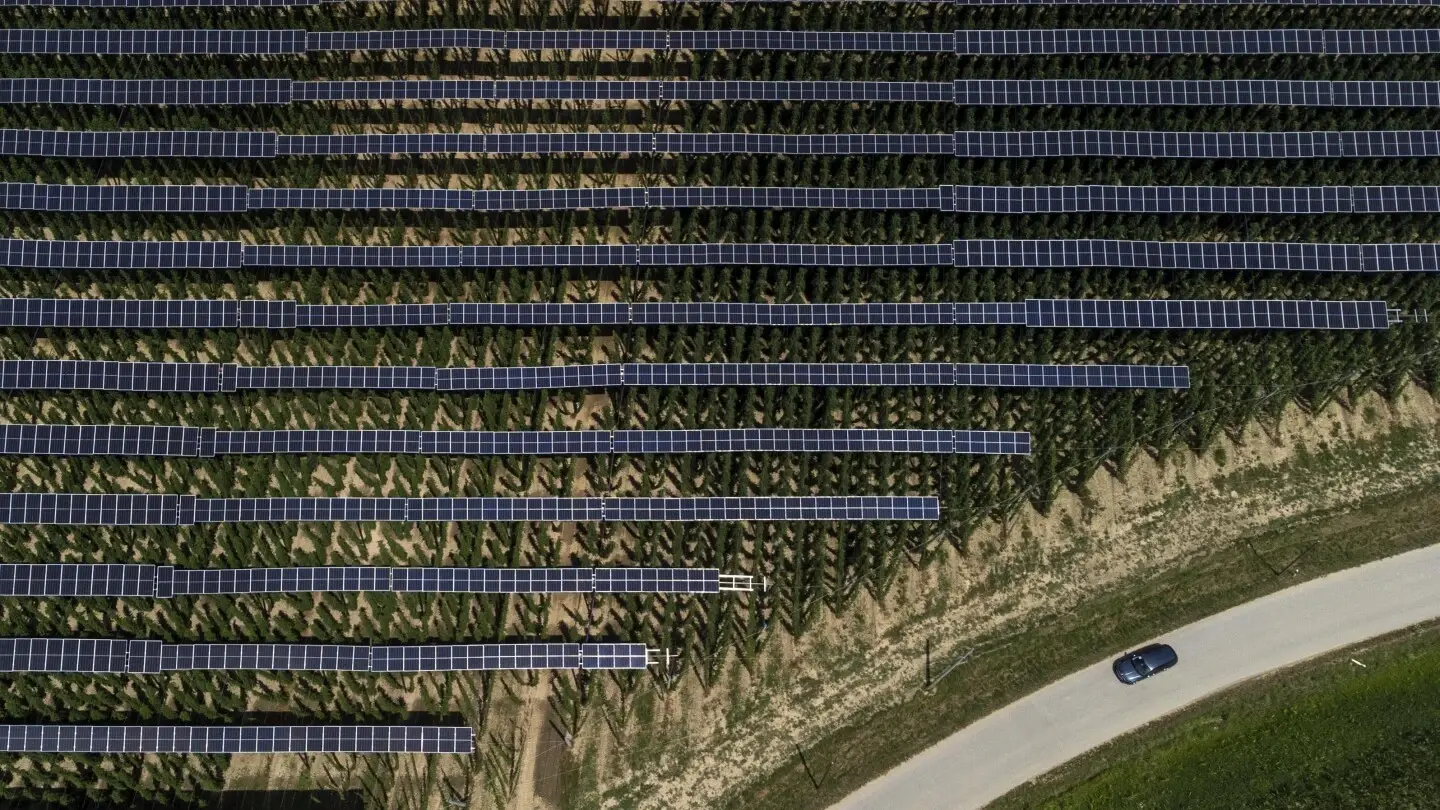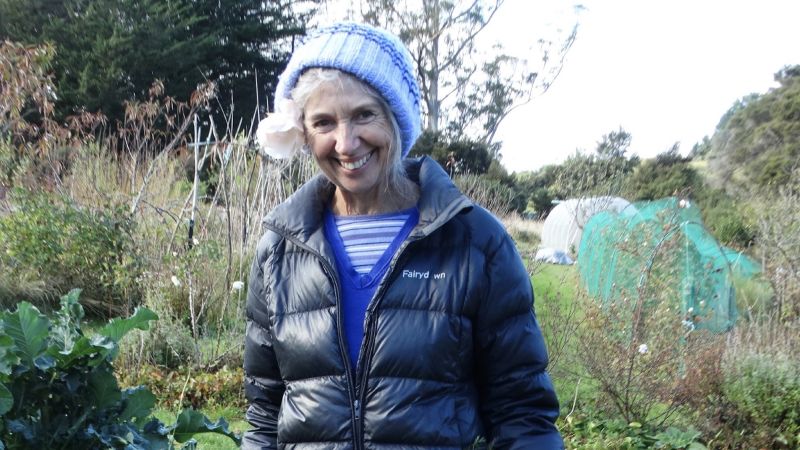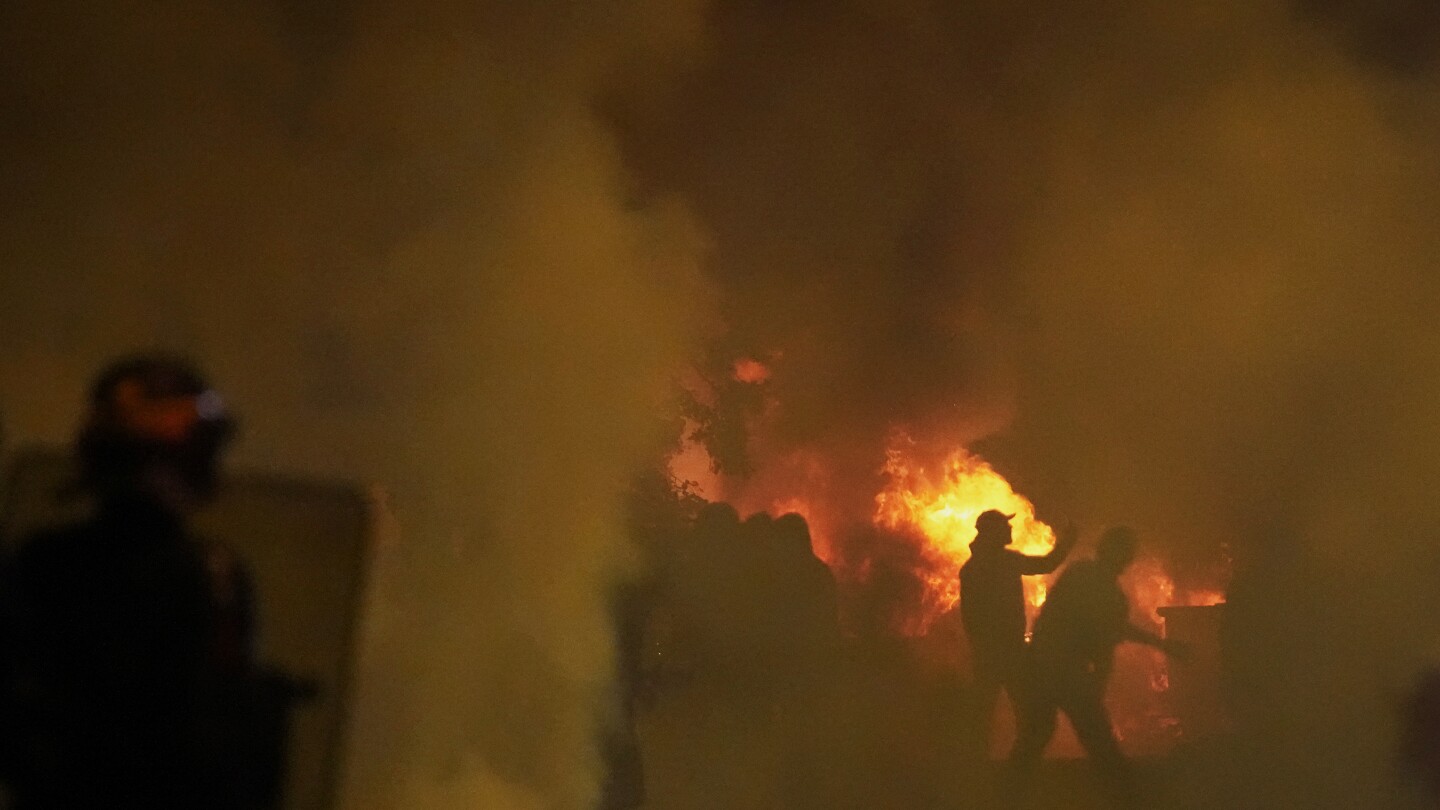Let go and let entropy. ,🌌
- 8 Posts
- 13 Comments

 14·1 year ago
14·1 year agoFull article
Hops for beer flourish under solar panels. They’re not the only crop thriving in the shade. | AP News MATTHIAS SCHRADER, DANA BELTAJI 7 - 9 minutes
Published 1:57 PM EDT, July 21, 2023
AU in der HALLERTAU, Germany (AP) — Bright green vines snake upwards 20 feet (six meters) toward an umbrella of solar panels at Josef Wimmer’s farm in Bavaria.
He grows hops, used to make beer, and in recent years has also been generating electricity, with solar panels sprawled across 1.3 hectares (32 acres) of his land in the small hop-making town of Au in der Hallertau, an hour north of Munich in southern Germany.
The pilot project — a collaboration between Wimmer and local solar technology company Hallertauer Handelshaus — was set up in the fall of last year. The electricity made at this farm can power around 250 households, and the hops get shade they’ll need more often as climate change turbocharges summer heat. This photograph provided by William Collins shows the string bean fields that were decimated at his farm’s fields by flood waters about a week earlier at Fair Weather Growers, Sunday July 16, 2023, in Rocky Hill, Conn. Prior to the flooding, the fields were thriving. When devastating rains swept through the region, farmers in the Northeast were dealt a devastating blow at the worst possible time. (William Collins photo via AP)
When rains swept through the Northeast, farmers in the region were dealt a devastating blow at the worst possible time. FILE - An employee of the Romanian grain handling operator Comvex oversees the unloading of Ukrainian cereals from a barge in the Black Sea port of Constanta, Romania, on June 21, 2022. Five European Union countries will extend their ban on Ukrainian grain to protect their farmers’ interests. But agriculture ministers from Poland, Slovakia, Hungary, Bulgaria and Romania said Wednesday, July 19, 2023 that food can still move through their land to parts of the world in need after Russia pulled out of a deal allowing Black Sea shipments. (AP Photo/Vadim Ghirda, File)
Five European Union countries will extend their ban on Ukrainian grain to protect their farmers’ interests. A man displays imported and local grain in Dawanau International Market in Kano Nigeria, Friday, July 14, 2023. Nigeria introduced programs before and during Russia’s war in Ukraine to make Africa’s largest economy self-reliant in wheat production. But climate fallout and insecurity in the northern part of the country where grains are largely grown has hindered the effort. (AP Photo/Sunday Alamba)
Nigeria is trying to make Africa’s largest economy reliant on its own wheat production. But climate change and violence in the northern part of the country, where grains are largely grown, have hindered these efforts. This photo taken from video released by Russian Defense Ministry Press Service on Wednesday, July 19, 2023, shows two Russian 152 mm self-propelled howitzers fire toward Ukrainian positions at an undisclosed location. (Russian Defense Ministry Press Service via AP)
Russia unleashed intense overnight drone and missile attacks that officials said damaged critical port infrastructure in southern Ukraine, including grain and oil terminals, and wounded at least 12 people.
Solar panels atop crops has been gaining traction in recent years as incentives and demand for clean energy skyrocket. Researchers look into making the best use of agricultural land, and farmers seek ways to shield their crops from blistering heat, keep in moisture and potentially increase yields. The team in Germany says its effort is the first agrivoltaic project that’s solely focused on hops, but projects have sprouted around the world in several countries for a variety of grains, fruits and vegetables.
Beer-making hops can suffer if exposed to too much sun, said Bernhard Gruber, who’s managing the project’s solar component — and since there were already solar installations on the farm, it made sense to give them a second purpose by mounting them on poles above the crops.
In addition to shielding plants from solar stress, the shade could mean “water from precipitation lasts longer, leaving more in the soil” and that “the hops stay healthier and are less susceptible to diseases,” Gruber said. A scientific analysis of the benefits for the plants will be concluded in October.
The farm is working with researchers to understand how to get the balance right, so the hops get enough shade and sunlight for the best harvests each year.
In the U.K., where weather is also getting hotter and more variable, a team of researchers is looking at how to retrofit solar panels onto greenhouses or polytunnels — frames covered in plastic where crops grow underneath — with semi-transparent or transparent installations.
“You can get your renewables from the land that you do have covered and you don’t need to do these massive solar arrays on good agricultural land, which is what you’ve tended to see around to date,” said Elinor Thompson, a reader at Greenwich University who’s leading the research.
Thompson, a plant biologist, and her team are working with a fruit farm in Kent in southern England to make sure the plants also get the best out of solar structures.
“Nobody can afford to lose crop, especially in current conditions,” she said. “We are assuming that British summers are going to get hotter, we have a problem with water shortages, we need to be efficient in all parts of agriculture.”
Having shade where it’s useful and monitoring the effects of different arrangements of solar panels on a variety of crops will help the world prepare for a more climate-variable future, Thompson said.
In East Africa, which has suffered from a long and punishing drought that scientists said was worsened by human-caused climate change, solar panels can also help keep moisture in plants and soil and reduce the amount of water needed, said Richard Randle-Boggis, a research associate at the University of Sheffield who’s developing two agrivoltaic systems in Kenya and Tanzania.
Randle-Boggis said the systems can be used for “climate change resilience and a way of improving the growing environment for crops, while also providing low carbon electricity.” He said that some of the crops under the partial shade of solar panels are using around 16% less irrigation.
The solar-covered farms saw increased yields for maize, Swiss chard and beans, and while growers experienced lower yields for onions and sweet peppers, they still had the added benefit of clean electricity generation.
But crop yields can also “vary depending on the weather conditions because we’re seeing the climate changing,” said Randle-Boggis, although he added he was “really surprised and impressed with some of the results that we’re seeing” for solar-covered crops.
“Maize is grown by about 50% of farmers in Tanzania. Maize is also a sun loving plant. So the fact that we had an 11% yield increase in maize … is a phenomenal result,” he said.
And Randle-Boggis said these projects can continue to be replicated around the world for many different crops, as long as systems are “designed with the local context in mind.”
A future with more crops under solar is Gruber’s hope for beer-making hops, too.
“At the end of the year we will set up another solar park over hops,” which will have about 10 times the electricity-generating potential as the current project, Gruber said.
But that’s still just the beginning.
“We’re getting lots of inquires from hop farmers,” he said, “even from abroad.”
Beltaji reported from London.
Associated Press climate and environmental coverage receives support from several private foundations. See more about AP’s climate initiative here. The AP is solely responsible for all content.

 1·1 year ago
1·1 year ago🤪

 1·1 year ago
1·1 year agoGreat ideas. Thank you!

 0·1 year ago
0·1 year agoI haven’t had luck with the current trap I’ve been using on active tunnels, moving, hoping, moving, crossing fingers, moving, etc. This suggested trap is a completely different style. Definitely going to look at it after work. Thanks!

 0·1 year ago
0·1 year agoAny issues/successes with mole tunneling around the yard? That’s my biggest bane.

 7·1 year ago
7·1 year agoBetter for her if what her lawyers are seeking comes to pass.
Sentencing is scheduled for September 8, according to Dunedin District Court. While the maximum jail sentence is 10 years, Penwarden said her lawyers are asking for “discharge without conviction.”
I’m so frustrated by the powers who put persons like her in prison while genuine and true corruption is permitted to continue unabated.

 1·1 year ago
1·1 year agoA progressive web app (pwa) is installed as an app on your phone. Developers can publish these web application online without users requiring an app store. They run on multiple platforms and devices from a single codebase, giving a platform-specific like experience. They are very light weight and even offer offline capabilities.

 12·1 year ago
12·1 year agoDid any of you guys try it as well? What’s your opinion?
In respect to Lemmy as a whole, I’m trying to exercise a lot patience.
One of the first things I did was install it as a PWA. It has a sleek UI, but some bugs makes it incredibly hard for me to use. One of the worst is an issue with several of the combo boxes which repeatedly flashing on use. I have to try hitting the appropriate selection multiple times in hopes of it eventually taking.
I use Jerboa most of the time inspite of the many bugs, but I usually end up having to open the PWA for missing functionality.
Like I said…
Lots… And lots…
And lots… of patience.
This article lead me down a rabbit trail where, via this article: Help Save Wood Thrush: Drink Bird-Friendly Coffee
I learned about this: https://birdsandbeanscoffee.com/
What Is Bird Friendly Coffee?
Bird Friendly® Coffee is Smithsonian Migratory Bird Center (SMBC) certified and represents a gold standard in ethical and sustainable coffee business.
Bird Friendly® Coffee is coffee that comes from family farms in Latin America that provide good, forest-like habitat for birds. Rather than being grown on farms that have been cleared of vegetation, Bird Friendly coffees are planted under a canopy of trees. These trees provide the shelter, food and homes migratory and local birds need to survive.
This morning, I’m really feeling the weight of what we are doing to the world. 😖
But… I was encouraged a bit to see something being done and in a way I wouldn’t have thought.
I’m unable to follow this link. Happen to have the original available?

 0·2 years ago
0·2 years ago⚠️ I have reported this post to the proper authorities.








sighs
Exactly.